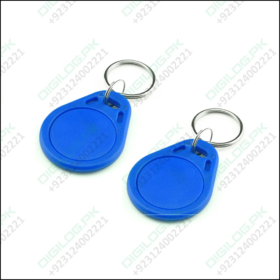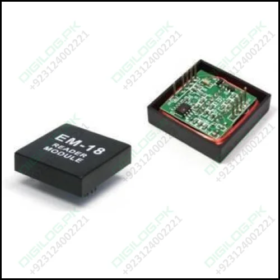Nfc Ic 125khz Bracelet Rfid
₨ 200
Out of stock
The NFC IC 125kHz bracelet RFID is a type of wearable device that utilizes Near Field Communication (NFC) technology and operates at a frequency of 125kHz. It is commonly used for identification and access control applications in various industries, such as access management, security, attendance tracking, and payment systems.
-
NFC (Near Field Communication) Technology: NFC is a short-range wireless communication technology that enables data transfer between devices when they are in close proximity (usually within a few centimeters). It allows for quick and easy interactions between the bracelet and NFC-enabled devices, such as smartphones, access control readers, or payment terminals.
-
IC (Integrated Circuit): The NFC IC within the bracelet is a microchip that stores and processes data. It contains an antenna for communication with external devices and is responsible for handling the RFID functions of the bracelet.
-
RFID (Radio Frequency Identification): The bracelet incorporates RFID technology, which allows it to wirelessly exchange data with compatible RFID readers. The RFID system typically consists of a reader and one or more RFID tags (in this case, the bracelet acts as the RFID tag). When the bracelet comes into the proximity of an RFID reader, the reader activates the RFID circuitry, allowing data exchange to occur.
-
Frequency: The bracelet operates at a frequency of 125kHz. This frequency is commonly used for low-frequency RFID applications, and it is suitable for short-range interactions as required for access control and identification purposes.
-
Use Cases: The NFC IC 125kHz bracelet RFID can be used in various scenarios, such as:
- Access Control: It can grant or restrict access to secure areas, buildings, or events by interacting with compatible access control readers.
- Identification: It can serve as a unique identifier for individuals, facilitating attendance tracking or personnel identification.
- Payment Systems: In some cases, the bracelet can be used for contactless payments at supported payment terminals.
- Loyalty Programs: It can be utilized in loyalty programs to track and reward customer interactions.
-
Wearable Design: The bracelet is designed to be worn comfortably on the wrist, making it convenient for users to carry their identification and access credentials without the need for physical cards or keys.
Specification:
-
Frequency: 125 kHz (operating frequency for communication).
-
Chip Type: The specific IC chip used in the bracelet may vary from one manufacturer to another. Commonly used chips for 125kHz RFID include EM4100, EM4200, T5577, and others.
-
Communication Protocol: The bracelet would likely support RFID protocols at 125kHz, such as EM4100/EM4102 or T5577 protocols.
-
Communication Range: The effective communication range between the bracelet and an NFC reader would typically be within a few centimeters or inches due to the low-frequency nature of the technology.
-
Memory Capacity: The onboard memory of the RFID chip can store a unique identifier (ID) for the bracelet. The memory capacity for such low-frequency RFID chips is usually limited and primarily used for storing a fixed ID.
-
Material and Design: The bracelet would be designed as a wearable, often made of materials like silicone or plastic, to ensure it is comfortable for users to wear.
-
Power Supply: Most RFID bracelets at 125kHz do not require a battery as they are typically passive devices. They draw power from the electromagnetic field generated by the RFID reader during communication.
-
Data Encryption and Security: 125kHz RFID technology typically does not offer robust data encryption compared to higher-frequency RFID or NFC technologies. Security measures may involve the use of unique identifiers or additional external security layers implemented by the system using the RFID technology.
![]()

























Reviews
There are no reviews yet.